PHOTOGRAPHY IN TRANSITION
by
ALEX WATERHOUSE-HAYWARD
______________
Get
modern or get fucked.
In 1979, the Modernettes,
my favourite Vancouver punk band, had that as their motto. They
spray painted our back alleys with it. I think of it every morning
when I wake up to face the uncertainty of being a photographer
in our 21st century world where photographs are no longer taken
but captured. It is a world with cameras that have something
called face recognition technology.
We
no longer have Oldsmobiles. Who drives Buicks and Plymouths?
My photo world is changing as rapidly. There are no more Minolta
SLR cameras, Agfa is gone, and the great yellow box’s
(Kodak) presence is so diminished that Ektachrome might soon
be a fading memory. Photo labs in Vancouver are dropping like
bodies in Agatha Christie’s And Then There Were None.
The uncertainty in my world of the freelancer is compounded
by the rise of micro stock agencies that sell photographers'
images for cents. And there is confusion, too. Consider the
logic of manufacturing state-of-the-art digital cameras while
calling yourself the Fuji Film Company.
This
change goes deeper, paradoxically, as more images end up on
computer monitors. Nobody would deny that a monitor image has
only two dimensions. The so called “rules” of composition
in photography were created to compensate for the loss of that
third dimension: depth. Diagonal lines in photos create a sense
of movement. But for me, while an image on a monitor has those
obvious two dimensions, a hard copy photograph (silver gelatin
print, inkjet, light jet print, giclée, etc) has a third:
thickness, which provides for heft and feel. Photographs have
two sides. If a particular photo happens to be an expensive
vintage print, it will be signed and dated by the photographer
on the back.
 Rising
in popularity are frames that are able to display digital images
as well as scroll from one image to another. Will there soon
emerge a generation of photographers who will have lost the
ability to discern subtleties like shadow detail in the blacks?
This comes from looking at an image for more than a few seconds.
They now want images that are not static, with colours that
are unreal or sharply contrasted -- code for zip and punch.
Technicolor is back.
Rising
in popularity are frames that are able to display digital images
as well as scroll from one image to another. Will there soon
emerge a generation of photographers who will have lost the
ability to discern subtleties like shadow detail in the blacks?
This comes from looking at an image for more than a few seconds.
They now want images that are not static, with colours that
are unreal or sharply contrasted -- code for zip and punch.
Technicolor is back.
In
the web-medium of Arts & Opinion, I cannot show
examples of the wonders of light jet prints (digital files on
laser heads are projected on to photographic paper) or the look
of a well printed giclée (artspeak for a high end commercial
inkjet print on art paper). These prints can show a delicate
transition of colour that is lost on a monitor.
I have
had senseless arguments about film versus digital with photographers
on on-line photo forums. They are no different from religious
or political ones. None of the participants will give ground
as debate invariably degenerates into shouting and insults.
But recently I saw the light. One photographer on the digital
end of one day’s argument noted that the scans of my original
transparencies (large slides) were poor imitations of the real
thing.
I thought
about the “real thing.” I got back to him saying
that in reference to my slides I could burn them, twist them,
project them, print them and even ignore them in a shoe box.
And if I wanted to I could even chew on them. I then asked him,
“Where is your original? Is it a series of 1s and 0s inside
a memory card? Can you touch and chew those 1s and 0s?”
But
my victory, when he could not get back at me, seemed hollow.
If I have not adopted the digital camera, it partly due to the
expense of the transfer. To switch from my medium format camera
to digital I would have to buy a digital scanning back. Which
means I would have to invest around $50,000 in order to retain
the quality of detail I now enjoy.
Photography
is in a hard-to-predict transition. Those who shoot digital
are out to prove their digital cameras can mimic film. They
print large images and ask you to guess if they are digital
or photographic prints. This is senseless. What would you think
of a person driving a horseless carriage that could deposit
stuff on the street every few blocks that looked like horse
droppings? But it’s wrong to think that digital photographers
must look forward, toward the future, for an indication of where
they are going, while leaving us, who shoot film, in our past.
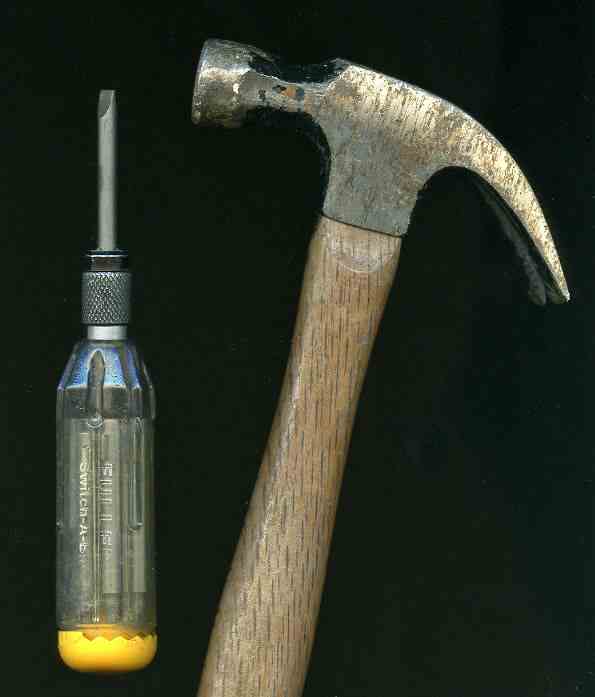 The
word ‘tool’ is used a lot in these arguments. You
placate your opponent by saying that a camera is a tool and
you use whatever tools fits or suits your needs. Which is why
a hammer suggests hammering nails or removing them. Or if you
wrap a hammer with cloth you can bang a loose chair joint. A
screwdriver, besides its conventional uses, could be used for
digging seed holes in the ground. It is the very nature of the
tool that suggests the end use.
The
word ‘tool’ is used a lot in these arguments. You
placate your opponent by saying that a camera is a tool and
you use whatever tools fits or suits your needs. Which is why
a hammer suggests hammering nails or removing them. Or if you
wrap a hammer with cloth you can bang a loose chair joint. A
screwdriver, besides its conventional uses, could be used for
digging seed holes in the ground. It is the very nature of the
tool that suggests the end use.
And
it was via this hammer and screwdriver comparison that I discovered
my personal solution for photography in today’s transition.
It consists in remembering that film occupies physical space.
But I also remember that film can be digitized and that this
process brings into the mix the best of both those worlds. I
would hope that those shooting digital will remember photography’s
roots when they are in search of a creative solution.
To
share a telling example with you, a year ago I was assigned
to photograph Canadian baritone Brett Polegato. He was in Vancouver
to sing the Vancouver Opera’s production of Mozart’s
Don Giovanni. I wanted to tell the story of how this womanizer
ends burning in hell. My solution was to take nine pictures
using a ring flash. I then picked one of the negatives and lit
it with a match. It cracked beautifully! I then scanned the
negative for the end result. I am not sure that I would have
come across this elegant solution had I been thinking digitally.
On another job, I had to illustrate a cast of actors who were
in a play about oriental heritage called The Banana Boys.
I photographed them, again with my ring flash. I scanned a banana
on my flatbed and added it as a frame.

Thinking
digital, I have come to love the look of the lowly Polaroid.
It is beautiful when scanned. I scan b+w Polaroids as colour
so my scanner injects a pleasant cool blue tone. Here you see
Canadian modern dancer and choreographer, Noam Gagnon, who is
one half of the famous Holy Body Tattoo. I sometimes scan the
Polaroid peels, particularly the colour ones.
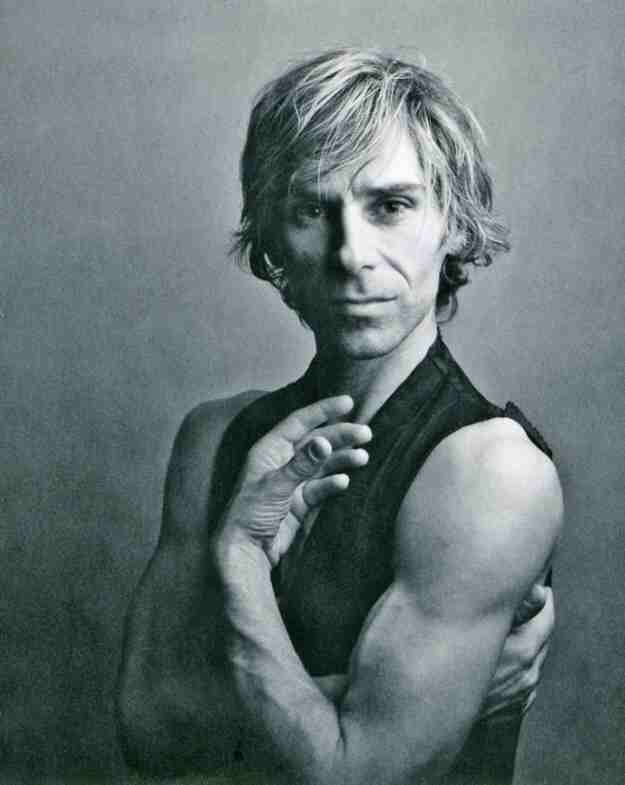
Here
is an example of Canadian violinist Corey Cerovsek.
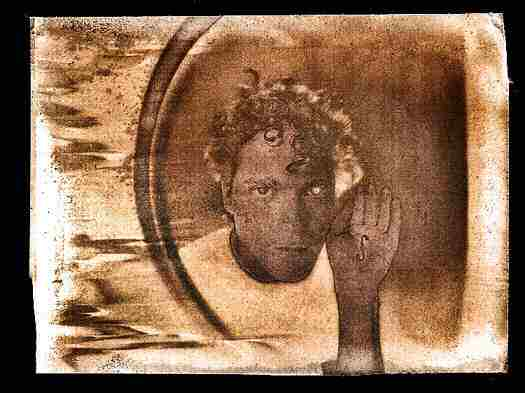
I haven’t
abandoned completely printing my own conventional b+w prints.
Here you see one of fencing Master Bac Tau and his pupil scanned
and modified. With a scanner and Photoshop I am able to find
colours that exceed the possibilities of conventional photo
toners.

As
a magazine photographer, I have discovered that some of the
better magazines in Canada use digital offset printing. This
method opens all kinds of possibilities for detail and sharpness
that at one time was impossible. Here is a recent cover made
from my b+w negative of Canadian actress Molly Parker. The negative
was drum scanned. I would have been hard pressed to get as good
a print in my darkroom.
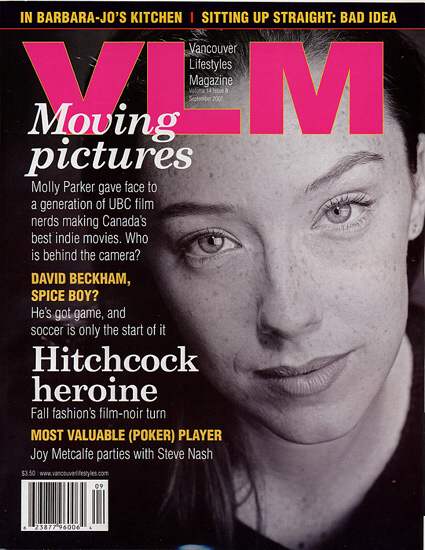
And
for my personal stuff I like to work with this hybrid system
of film/digital. "Yuliya Tied Up" is a scanned Polaroid.

"Tarren’s
Bum" is the result of treating a b+w negative as a colour
negative. I can get realistic skin tones or loud fiery ones.
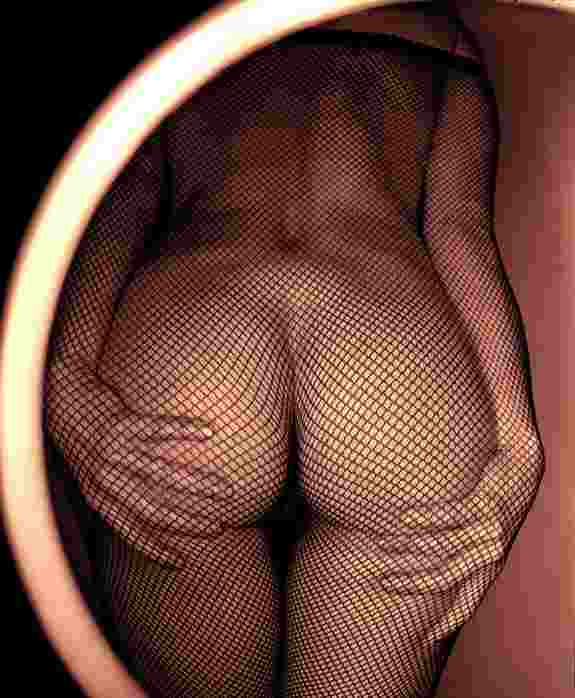
“What
kind of photographer are you?” I am often asked. Of late
I like to reply, “I’m like a Toyota Prius.”
For
more of Alex's photography, visit his website at:
www.alexwaterhousehayward.com